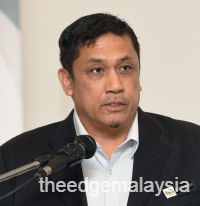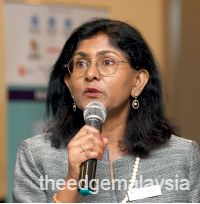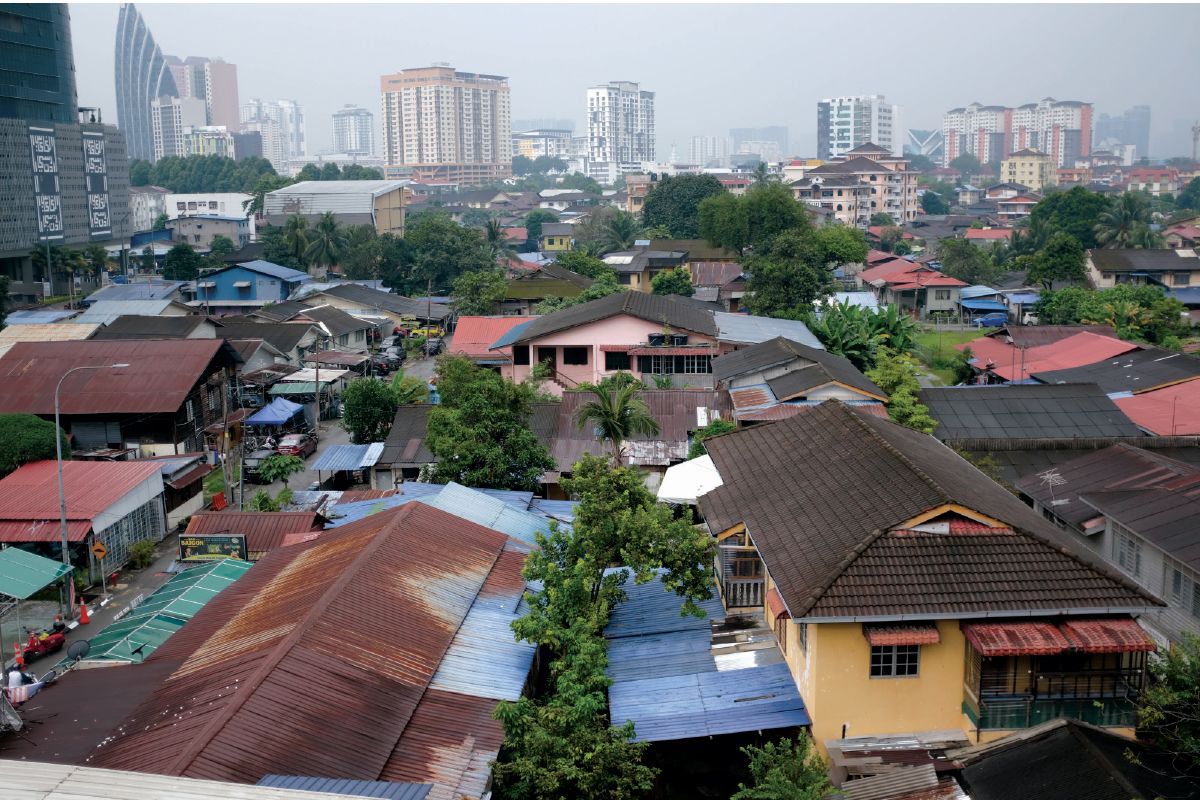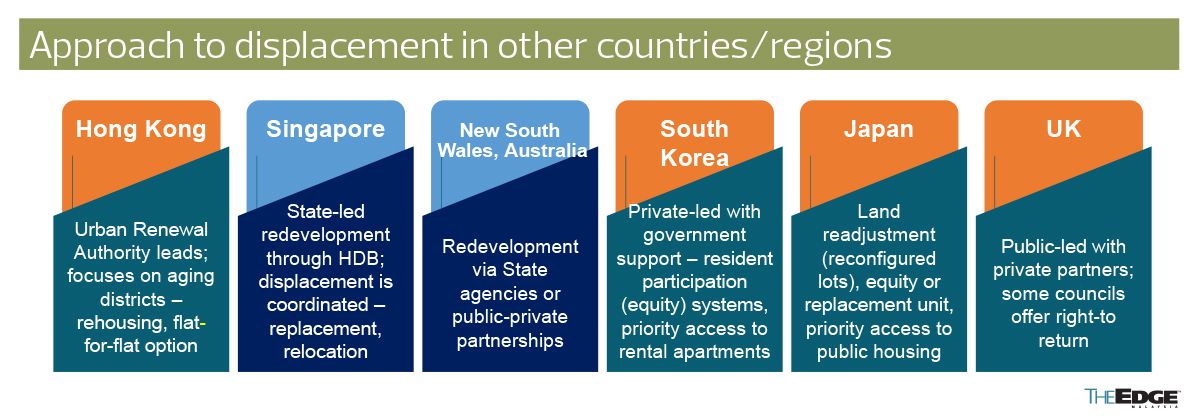
This article first appeared in City & Country, The Edge Malaysia Weekly on June 9, 2025 – June 15, 2025
The proposed Urban Renewal Act (URA) by the Ministry of Housing and Local Government (KPKT), which is expected to be tabled during the July parliamentary sitting, will benefit property owners instead of private developers, said Real Estate and Housing Developers’ Association Malaysia (Rehda) Institute during the Executive Dialogue on the Position Paper titled “Urban Renewal: Making It Work” on May 26.
In his welcome address, Rehda Institute chairman Datuk Jeffrey Ng Tiong Lip highlighted that with about 75% of Malaysia’s population now living in urban areas, many cities and townships — particularly those developed between the 1960s and 1980s — are facing pressing challenges, including outdated infrastructure, poor liveability, underutilised land and socioeconomic decline.
“Without strategic intervention, these areas risk falling into further disrepair. However, urban renewal must not come at the cost of displacement and unfair compensation to the property owners,” he said.
“Redevelopment efforts must be sensitive to the realities of existing communities, including residents, small businesses and vulnerable groups, who may face relocation or disruption. A truly sustainable urban renewal approach should aim to revitalise without marginalising, ensuring that people and place remain central to the process.

Ng: A truly sustainable urban renewal approach should aim to revitalise without marginalising, ensuring that people and place remain central to the process (Photo by Patrick Goh/The Edge)
“It is also important to clarify that the proposed Urban Renewal Act is not designed to benefit developers per se. Rather, it is meant to empower property owners to take the lead in initiating renewal efforts and determining how they wish to enhance the value of their existing assets.
“Developers are not the drivers of this process; instead, they come in later to support and realise the initiatives once momentum has been established by the owners themselves. This owner-led model underscores the [proposed] Act’s emphasis on inclusive, community-driven transformation.”
Jointly organised by Rehda Institute and Bank Pembangunan Malaysia Bhd, the dialogue session supports the development of a position paper focused on the redevelopment of land owned by multiple private owners. According to Rehda Institute, the paper, to be submitted to the KPKT by mid-June, seeks to outline people-centric solutions under the proposed URA.
The dialogue session attracted about 40 participants from diverse backgrounds, including PLANMalaysia as the guest of honour, along with invited representatives from Kuala Lumpur City Hall (DBKL), the Malaysian Institute of Planners (MIP), KPKT, Malaysian Institute of Architects (PAM), developers and homebuyer groups.

Nazri: We carry a major responsibility in ensuring sustainable urban management that generates high income (Photo by Patrick Goh/The Edge)
In his opening speech, PLANMalaysia deputy director general (planning) Md Nazri Abdullah said: “Urban renewal is a new domain, increasingly important as available land becomes limited. It offers opportunities to revitalise ageing, deteriorated and neglected urban areas facing social and infrastructural issues. We carry a major responsibility in ensuring sustainable urban management that generates high income.
“PLANMalaysia has conducted literature reviews of international best practices to strengthen the bill [proposed by URA]. We have engaged with Rehda Institute for support in literature review of international urban renewal practices, study on abandoned housing projects and study on criteria for developers qualified to undertake urban renewal projects.”
Propositions for URA
In her presentation, Rehda Institute research and education director Malathi Thevendran discussed initiatives that could be included in the proposed URA.
First, Malathi pointed out that compensation could be provided as a cash payout equivalent to the market value of the old unit, a replacement unit in the new development or other suitable options, depending on the situation.

Malathi: In the case of privately owned properties, will the government now also act as the developer? This is another point that needs careful thought. (Photo by Patrick Goh/The Edge)
Next, she said transit housing should be provided during the redevelopment process to ensure residents have a temporary place to stay.
She also said development projects should be carried out through open tender bidding, limited to qualified and eligible developers. “That’s a good move, but it raises a question: Should we still rely on the concept of eligible relinquishment or just let the free market dictate terms?”
In terms of the redevelopment process, Malathi said it would be led by the government, which will handle planning, mobilisation and stakeholder engagement.
“Now, with government-led redevelopment efforts, especially on government-owned land, yes, it’s within the government’s rights to proceed as it sees fit. The question is, when there are multiple owners involved, who takes precedence? Is it the main landowners or does the government lead?”
Malathi also explained that phased development can be implemented, where some blocks are completed first to relocate original owners before any demolition takes place. She also said a tripartite agreement involving the property owner, the government and the developer may be introduced to ensure all parties are aligned.

Kampung Baru is one of the 139 sites listed in the Kuala Lumpur Structure Plan 2040 as a potential redevelopment site (Photo by Chai Yee Hoong)
“There’s also the idea under discussion of a trial-type agreement between the owners, government and developers. As we know, the government already has its hands full with various responsibilities. So, the question becomes, in the case of privately owned properties, will the government now also act as the developer? This is another point that needs careful thought.
“Lastly, on the declaration of urban renewal areas, it’s important that local authorities play a role in this, either through the existing local plans or via proposals from developers or owners. This step is crucial because we want all urban renewal efforts to be well planned and aligned with proper guidelines from the outset.”
For the community
The dialogue session, featuring participants from various backgrounds, focused on four key prompts: consent threshold and seamless processes; fair compensation and resident displacement; practical design expectations and incentives; and transparent tendering with adequate funding.
Regarding consent thresholds, participants acknowledged that the minimum agreement threshold for redevelopment projects was typically set at 75%, but some advocated for raising it to 80% or even 90%.

“A higher percentage may ensure greater buy-in from existing residents,” a participant from Bank Pembangunan Malaysia explained.
For landed properties, a 100% agreement threshold was suggested. A participant from DBKL said: “For landed properties, since ownership is individual, it should be straightforward. I believe when it comes to landed properties, the process falls back under the Land Acquisition Act of 1960 but if the URA comes into play, then 100% consent should be implemented.”
For fair compensation and proper property valuation, the participants all agreed that these are essential in any urban renewal initiative.
A participant from a homebuyer group said: “The compensation should be based on the property’s open market value and include any additional costs. It’s important that valuation considers the entire [development], rather than just focusing on individual units. Compensation should also cover transitional costs, especially those related to temporary displacement during redevelopment.”
In terms of fair resident displacement, a participant from MIP said one-to-one replacement of housing should be ensured, with new units matching or exceeding the original in both value and space.
“Residents should be offered the first right to return or purchase units in the new development. At the same time, strategies must be implemented to maintain the social fabric of these communities,” he added.
Concurring with him, a representative from DBKL said displacement concerns must be addressed thoughtfully. She added that temporary housing should be provided on-site to reduce the impact on affected residents.
“There should also be clear guidelines for selecting alternative temporary accommodation if on-site solutions are not feasible. It would also be good to profile affected residents such as families, seniors or low-income groups. This will help tailor relocation and support efforts to meet the specific needs of the group,” she said.
For realistic and practical expectations of design, the participants said it was important to think about what happens after redevelopment, especially for vulnerable residents.
One participant said: “Right now, many residents are struggling to survive in their current conditions. So, we need to be thoughtful about the design of new buildings by maybe considering options such as dual-key units and ensuring that facilities are accessible and affordable.

“It’s also crucial that the new development includes features that allow the residents’ management committees and even public services such as the police to function effectively. This includes ensuring that maintenance fees are manageable for the long term. While some developers are generous in offering larger or better units, we must be careful not to overdo it.”
Another participant, who is a property developer, said: “Offering too much, like very large homes, may look good at first, but it can lead to higher maintenance costs. Eventually, this can cause residents to move out if they can’t afford the upkeep. So, we must strike a balance, provide good, sustainable facilities and build a development that supports residents in the long term.”
All participants agreed that transparency and open bidding in the urban renewal process are crucial and should be mandated by law.
“A tribunal mechanism should be established to allow non-consenting owners to file appeals and have their concerns heard,” a participant from DBKL added.
She also said it was important to formally audit and verify that the 75% consent threshold had been genuinely met before any project moves forward.
Save by subscribing to us for your print and/or digital copy.
P/S: The Edge is also available on Apple’s App Store and Android’s Google Play.






